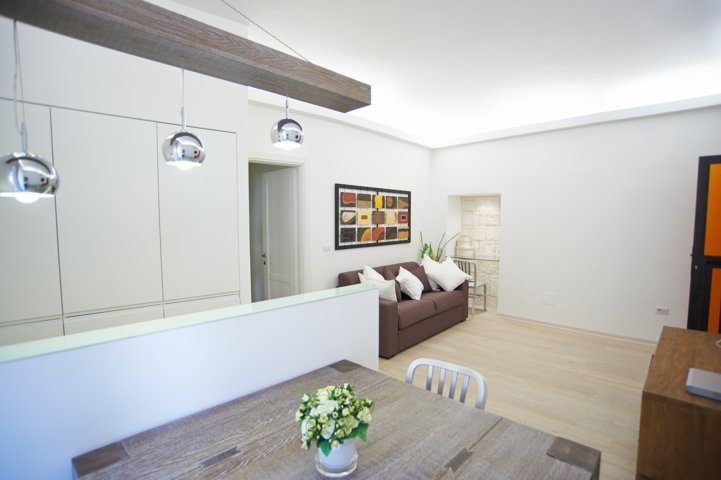
Here it is, therefore, via Anacreonte: alley, small street, discreet passage between the two banks of the Sperduta.
An almost hidden entrance, a pleasant terrace overlooking a protected and bright courtyard with flowers, the courtyard that opens onto via Mergulensi which becomes a square and preserves the childhood memories of the ortigiani and a view of the Norman via Mirabella, among churches and almost secret monasteries following the overlapping of eighteenth-century and nineteenth-century habits and customs.

It is sweet to live in the Spirduta, in Italian Sperduta, the district of Ortigia so called since time immemorial because it is a tangle of streets, alleys, ronchi and stories of families, congregations and religions, houses and palaces that have become churches and stables, churches that have become housing.
The Sperduta can be accessed from via Maestranza along via dei Santi Coronati, from piazza Archimede along via Dei Montalto towards via dei Mergulensi, from Via Gargallo and from Via Dione through Via dei Tintori. Via Anacreonte is located between via Mirabella and via Dei Mergulensi, between ancient and recent history.

Cafeterias, restaurants, churches, prestigious historic buildings, artisan shops, coworking spaces, the recently renovated elementary school, laboratories, breweries: realities that coexist in harmony, welcoming and sharing places born with the specific intent of increasing the value and the quality of neighborhood life.
We are all welcome at the Spirduta, between benches and steps on the doors of the houses, to chat and get to know each other, since the time when it is thought there was an agora, since the time when the Arab shops arrived and then the Jewish ones.

Palazzo Montalto is here, built in 1397, was named after the Mergulese Maciotta family and is evidence of the Chiaramonte Gothic architecture and how precious it was for Sicily to welcome different cultures; three rose windows on three of the most beautiful windows in Ortigia, are shown defying time (and sometimes the neglect of men): a star of David, a Greek cross and a quadrilobed tunnel.

Could it be a way to find yourselves and find yourself again? Two apartments are available to multiply the emotions.
The natural beauty of this island, together with a calendar full of events all year round, make Sicily always a fantastic place to visit.
What are you waiting for?
Pagamenti accettati / We Accept



We are members of
